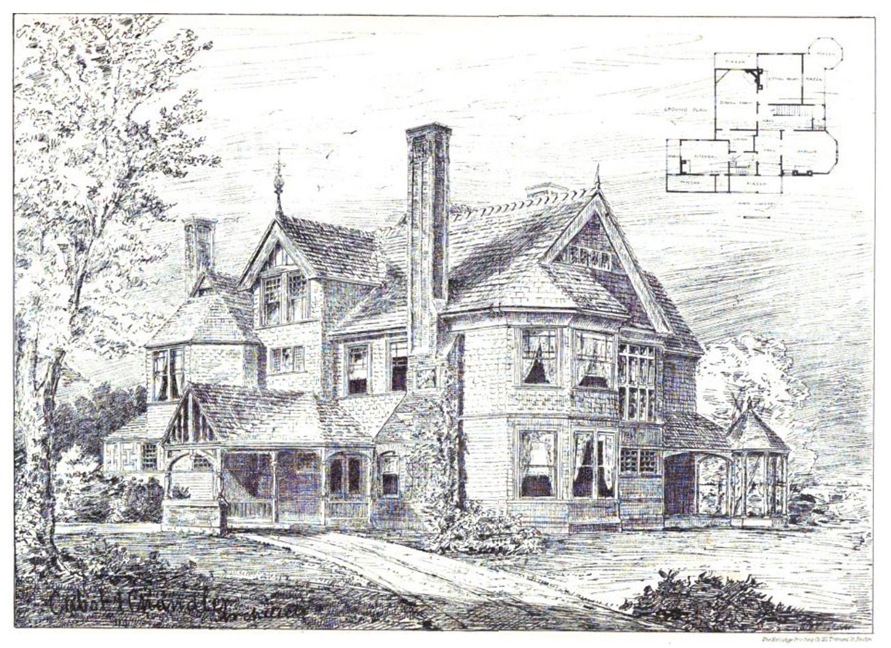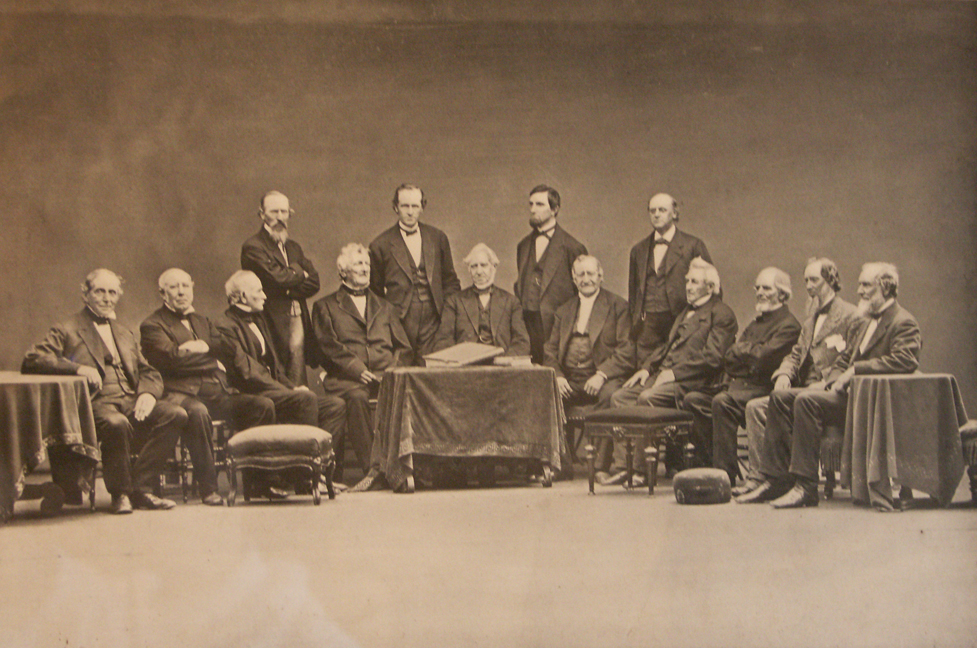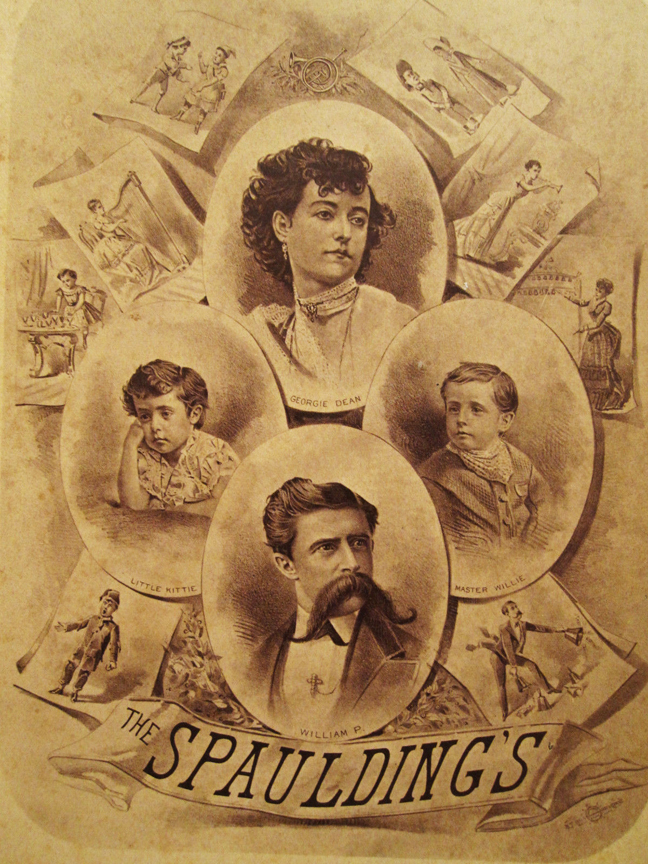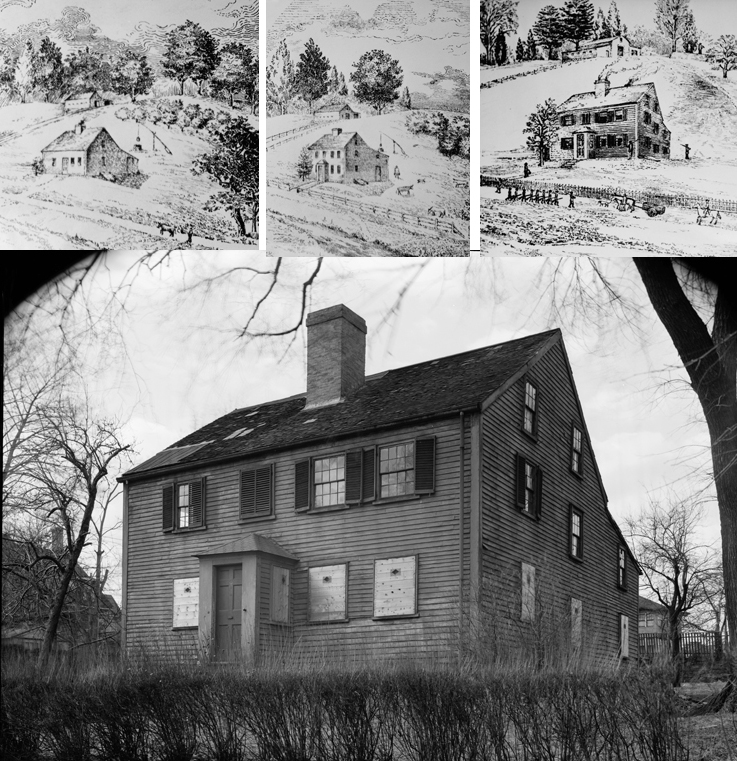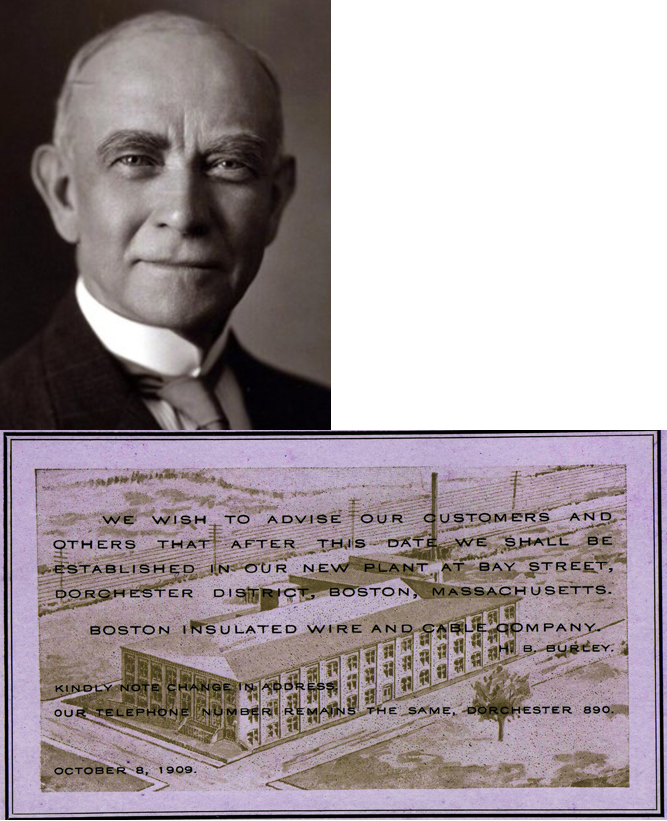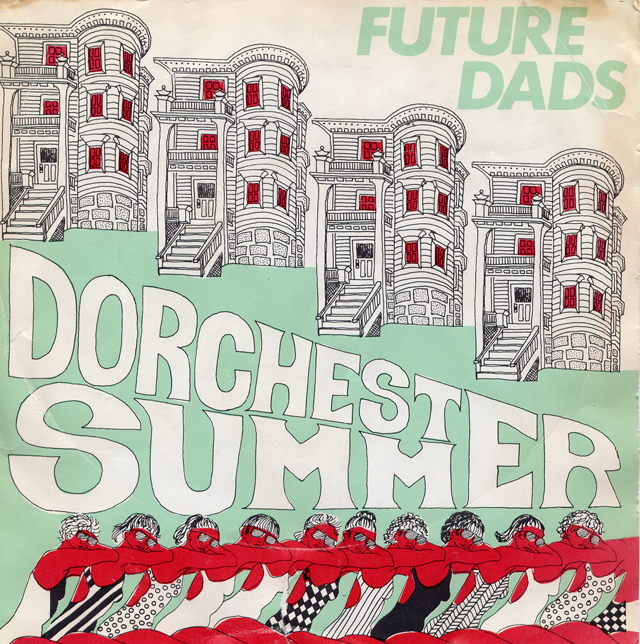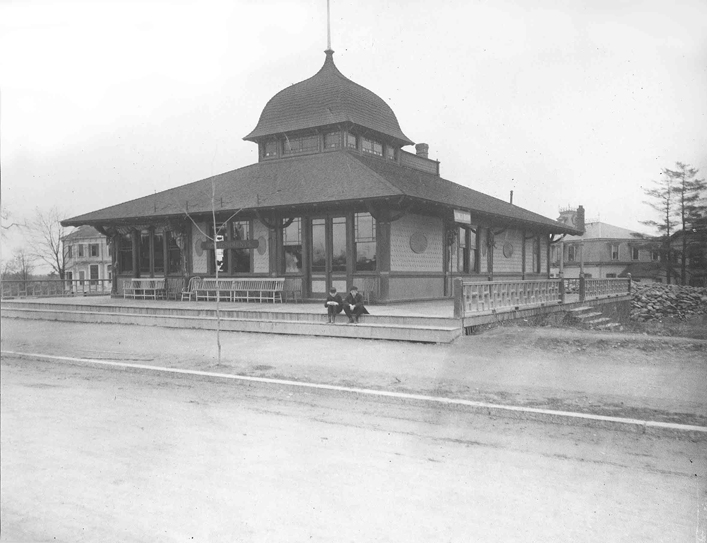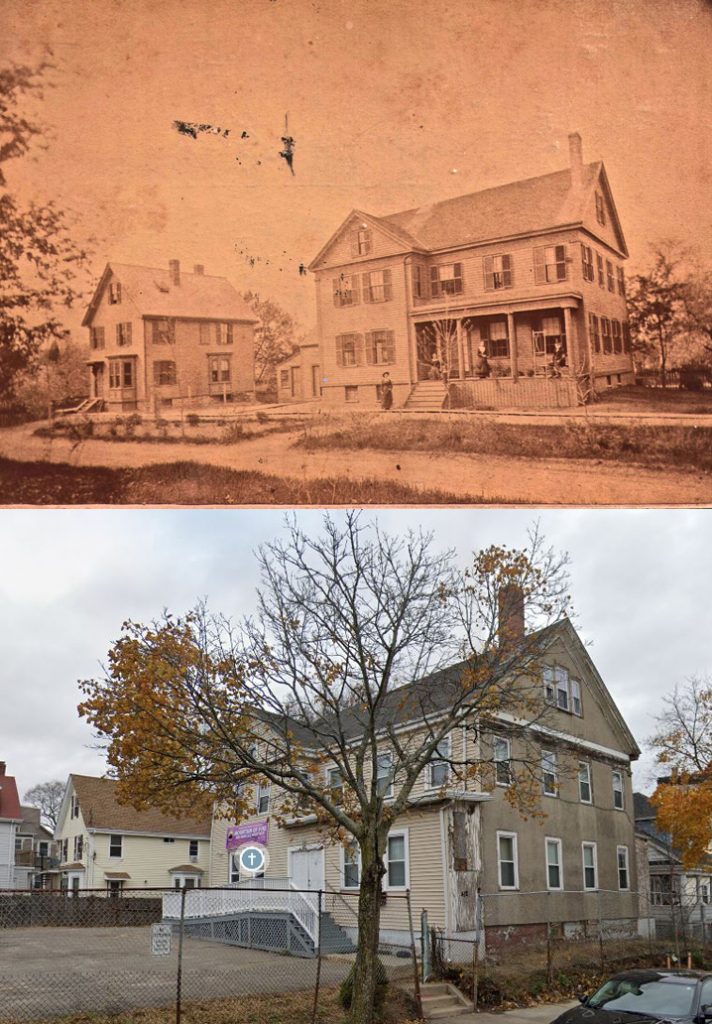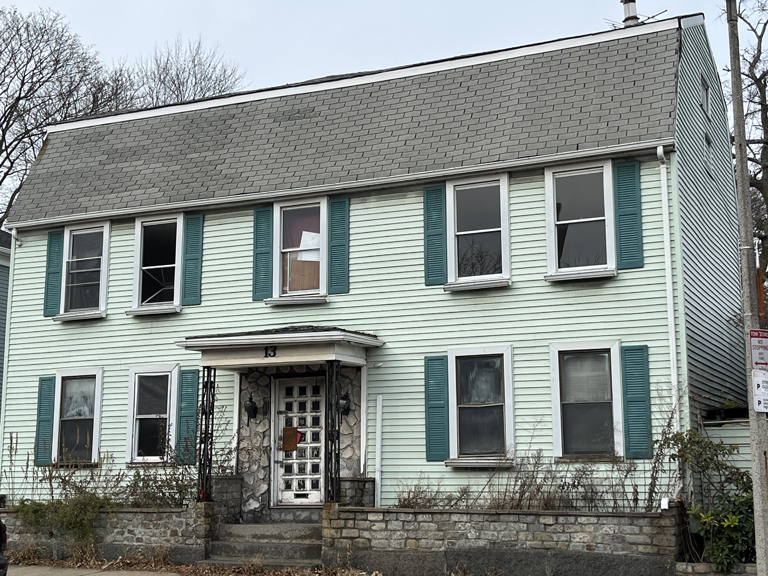
Tileston House a Military Hero’s Home
Dorchester Illustration 2646
Text from Carole Mooney
The house in this illustration may look familiar, you can see it when leaving the Shaw’s Market parking lot. The house at 13 River Street was built around 1797 by Euclid Tileston who learned cabinetry from Ezra Badlam, his father-in-law, and later became a carriage maker. The property was owned by the Tilestons until 1897.
The building is on the National Register of Historic Places, the nation’s official list of places worthy of preservation, and is a designated Boston Landmark. The building is listed in Boston’s Oldest Buildings and Where to Find Them by Joseph M. Bagley, as the 28th oldest building in Boston. (Bagley states that the house was built about 1770.)
It was the home of Fourth Lieutenant Ezra Badlam who marched to Roxbury on April 19, 1775, in response to the Lexington Alarm with his brother Stephen, a sergeant, and his youngest brother William, a fifer (a small flute). Ezra served as an officer, from the beginning of the Revolutionary War until his dismissal from the army in 1782, first in the Massachusetts Militia then as Lieutenant Colonel in the Continental Army.
Ezra was orphaned at an early age and his grandfather was lost at sea before his father was born. Nevertheless he managed not only to survive but to prosper. Ezra taught his brother Stephen the cabinet-making trade in a building that once was on the River Street property. Although none of Ezra’s furniture has yet been found, Stephen’s exceptional work is on display at Yale University, the Metropolitan Museum of Art and the Dorchester Historical Society. Dorchester Park encompasses much of the woodlot they used.
Copies of Badlam’s correspondence are stored in the Dorchester Historical Society archives and transcriptions will eventually be available on the DHS website. Ezra corresponded with George Washington, Alexander Hamilton, Benjamin Lincoln and other war heroes and their voices can be heard directly through the context of Ezra’s letters which describe attacks, defeats, atrocities, smallpox, courts martial, traitorous deceptions, hunger, cold, relationships, lack of finances, deserters, Tories, spies, military maneuvers and even the design of Continental uniforms which differed slightly from state to state.
The Badlams are significant historical figures in American military history. A restored 13 River Street would be a source of pride and a reminder of Dorchester’s rich heritage, such as the Paul Revere House.

